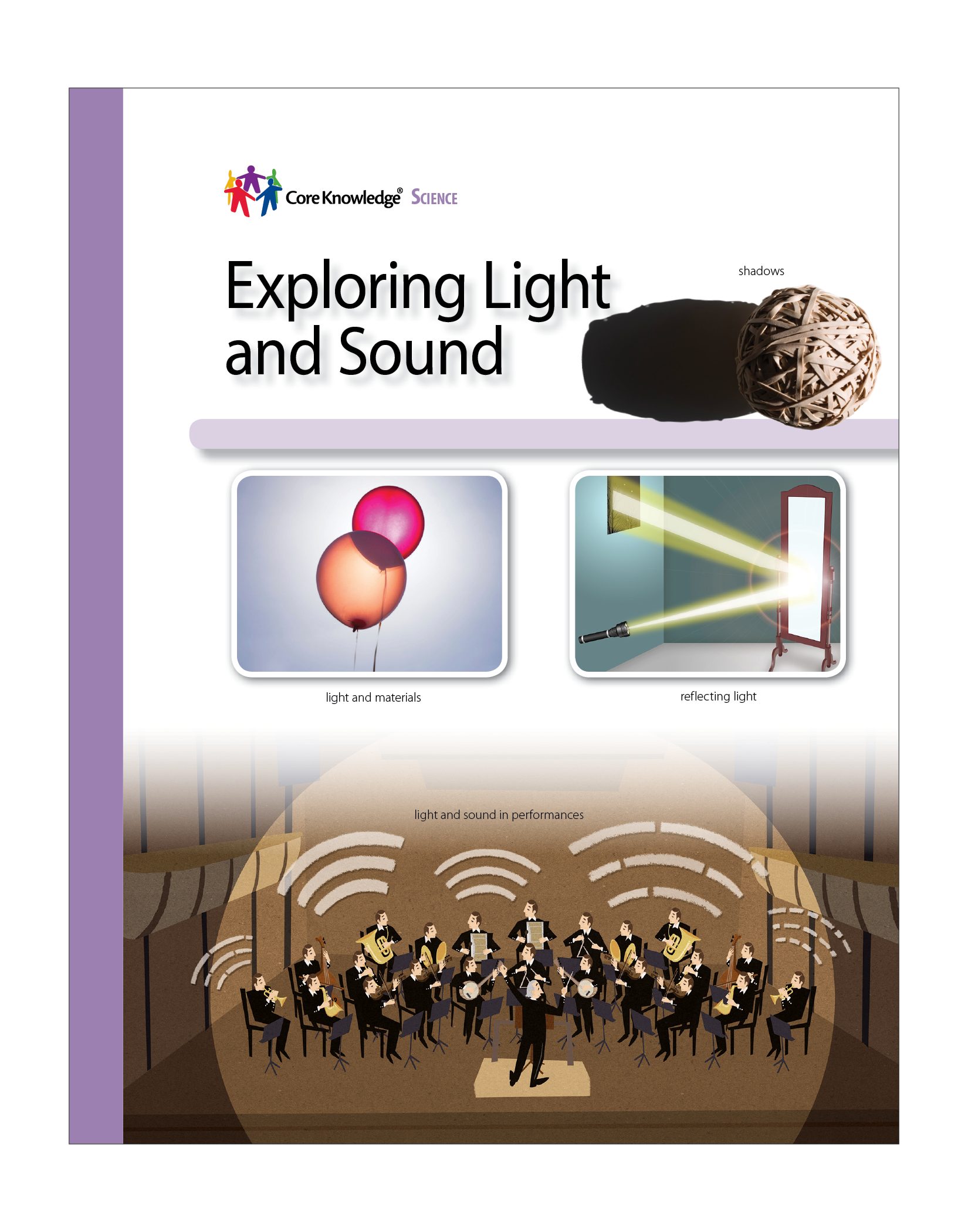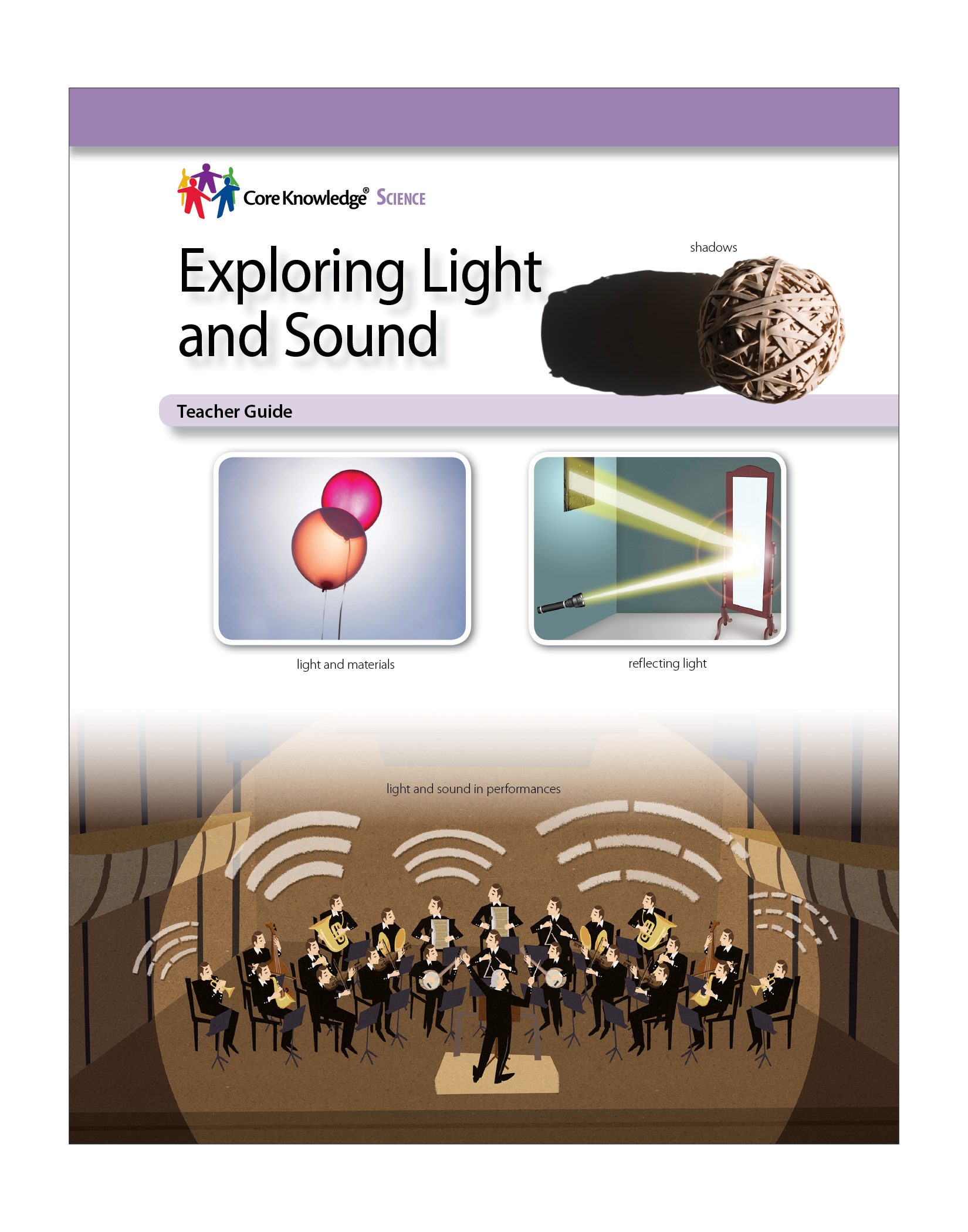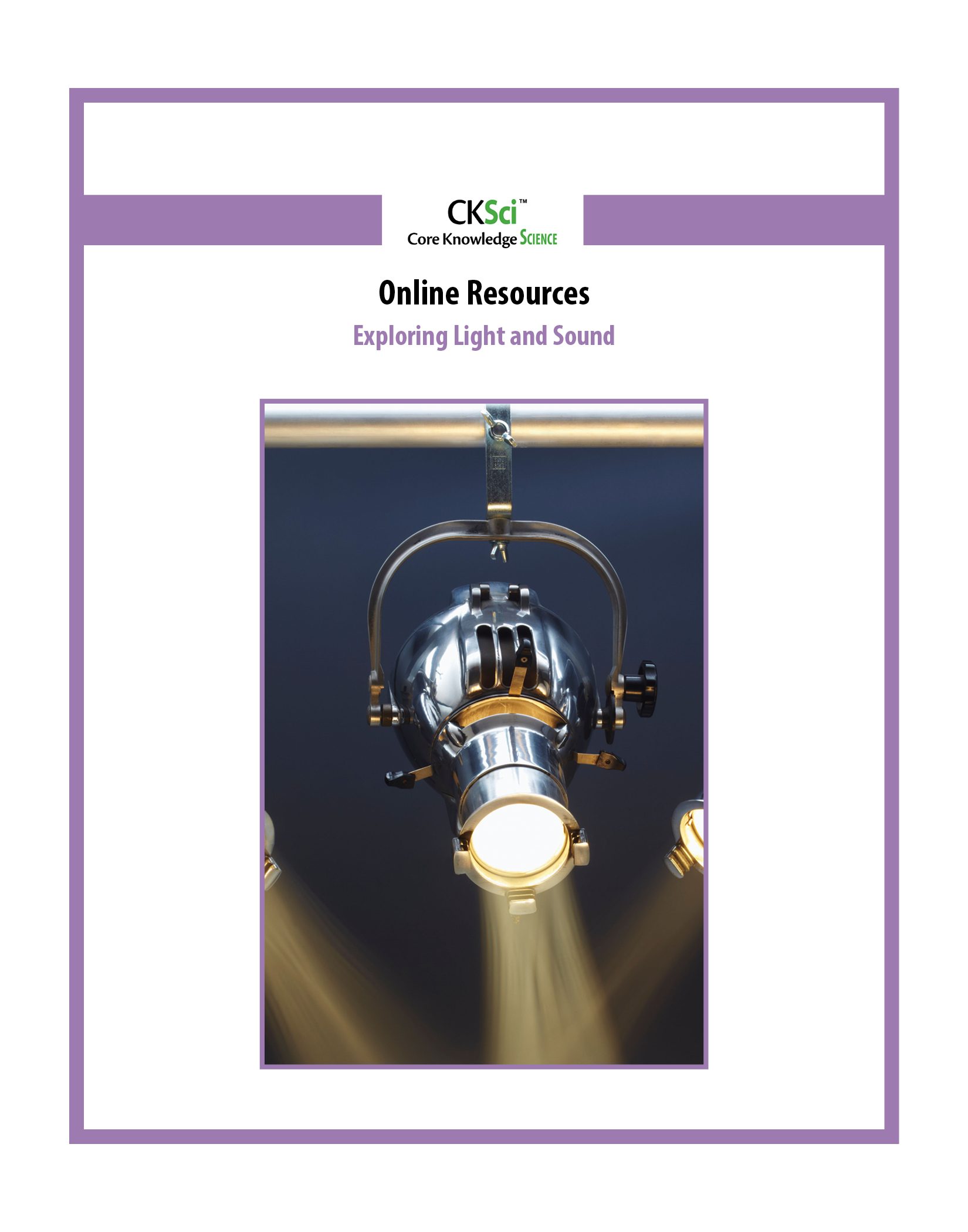
CKSci Unit 3: Exploring Light and Sound
Focus:
In this unit, students investigate with light and sound to see how they can be used to communicate with an audience in a theater. Students will explore different light sources, mirrors, and shadows. Students will determine the relationship between vibrations and sound. They will further explore waves and their applications in technologies for information transfer in Grade 4 Unit 1 Energy Transfer and Transformation, and Grade 4 Unit 2 Investigating Waves.
Students explore concepts that include the following:
- Objects can be seen if light is available to illuminate them or if they give off their own light.
- Some materials allow light to pass through them, others allow only some light through, and others block all the light and create a dark shadow on any surface beyond them, where the light cannot reach.
- Mirrors can be used to redirect a light beam.
- Sound can make matter vibrate, and vibrating matter can make us hear a sound.
- People use a variety of devices to communicate (send and receive information) over long distances.
Students have recognized that certain objects give off light while other objects can only be seen when illuminated by objects that are light sources. Through experiences, students will learn that materials interact with light in different ways—some allow light to pass through, others block some or all light, and still others reflect clear images. Students understand that they hear sound, but they may not know there is a relationship between sound and vibrations. Sound can cause matter to vibrate, and vibrating matter can cause sound.
Students will apply what they learn to use light and sound to solve a communication problem. Engineers and engineering designers use knowledge of the properties of matter as they use materials in design solutions and make things that are useful to people. This series of lessons incorporates learning goals that support the principles and practices of engineering design, such as defining problems, testing materials, and evaluating possible solutions.
Number of Lessons: 4 (Each lesson is divided into four to five lesson segments.)
Instruction Time:
- Each Lesson may be divided into Lesson Segments.
- Each Lesson Segment is designed to be completed in one 30-45-minute class period.
- Some single-day activities and performance tasks might require setting aside a longer block of time.
- This Unit should be completed between 25–37 classroom days.
- A Pacing Guide Template is provided within the Teacher Guide so teachers can map out customized instructional days for this unit.
- A complete list of Materials needed to complete the unit is provided in Online Resources.
Additional Search Terms:
sound • hear • vibrate • vibration • cause and effect • light • dark • see • shadow • surface • mirror • light beam • reflect • code • communicate • message • signal • spotlight • nonfiction • informational text



